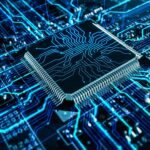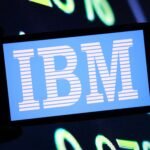Buckle up, folks, because we’re diving into the wacky world of quantum superposition, where particles pull off the ultimate magic trick: acting like waves when nobody’s looking and snapping into solid particles the moment you sneak a peek! This mind-bending feature of quantum mechanics, showcased in the famous double-slit experiment, is the secret sauce behind quantum computing’s superpower to tackle problems that make classical computers sweat. Superposition lets quantum bits (qubits) juggle multiple states at once, like a cosmic circus performer, enabling quantum computers to solve complex puzzles in fields like cryptography, chemistry, and optimization. Scientists have only recently tamed this quantum quirk, turning it from a theoretical head-scratcher into a practical tool for quantum computing. In this article, we’ll unpack superposition with a fun, witty non-technical explanation for everyone, a detailed scientific breakdown for the nerds (we say that lovingly), and a look at how recent breakthroughs have harnessed this wave-particle wizardry to power quantum computers as of July 18, 2025. Let’s get quantum!
Non-Technical Explanation: The Quantum Party Trick of Superposition
Picture this: you’re at a party, and there’s a guest who’s somehow dancing and chilling on the couch at the same time. Nobody’s watching them closely, so they’re pulling off both moves, creating a wild blur of action. But the second you turn on a spotlight and stare, they pick one—dancing or chilling, no in-between. That’s superposition in the quantum world! Tiny particles like electrons or photons (light bits) are the ultimate party animals, acting like wavy, spread-out clouds when you don’t watch them, but snapping into solid, dot-like particles when you do. This is best seen in the double-slit experiment, where particles are fired at a wall with two slits. Leave them alone, and they make a wavy, striped pattern on a screen, like ripples in a pool. Peek at which slit they go through, and—bam!—they act like bullets, hitting just one spot or another.
This quantum quirk is why quantum computers are such a big deal. Regular computers use bits, like boring on-off switches (0 or 1). Quantum computers use qubits, which are like party guests who can be 0, 1, or a wild mix of both thanks to superposition. This lets them try every possible answer to a problem at once, like picking every door in a game show simultaneously! Imagine cracking secret codes, designing life-saving drugs, or planning the perfect road trip in a fraction of the time. The catch? Superposition is super fragile—any disturbance, like a nosy neighbor, collapses the wave into a particle. Scientists have only recently figured out how to keep these quantum party tricks going long enough to compute, using fancy tech like super-cold fridges and laser traps. It’s like learning to keep the party vibe alive without anyone crashing it!
Scientific Explanation: Superposition and Wave-Particle Duality
Superposition and the Double-Slit Experiment
Quantum superposition is a fundamental principle of quantum mechanics, stating that a quantum system can exist in a linear combination of multiple states until measured, at which point it collapses to one state. For a quantum particle, such as an electron or photon, the wave function is described in a Hilbert space:
[ |\psi\rangle = \alpha|0\rangle + \beta|1\rangle ]
where (|0\rangle) and (|1\rangle) are basis states (e.g., spin up/down or slit 1/slit 2), (\alpha) and (\beta) are complex amplitudes, and (|\alpha|^2 + |\beta|^2 = 1). The probabilities of measuring the system in (|0\rangle) or (|1\rangle) are (|\alpha|^2) and (|\beta|^2), respectively.
The double-slit experiment vividly illustrates superposition and wave-particle duality:
- Unobserved (No Measurement): When particles are fired at a barrier with two slits and no detector determines which slit they pass through, the screen behind shows an interference pattern—alternating bands of high and low particle density. This indicates wave-like behavior, where the particle’s wave function passes through both slits simultaneously, interfering with itself. The wave function is:
[ |\psi\rangle = \frac{1}{\sqrt{2}}(| \text{slit 1} \rangle + | \text{slit 2} \rangle) ]
The probability density, (|\psi(x)|^2), includes interference terms, producing the characteristic pattern.
- Observed (Measurement at Slits): When a detector measures which slit the particle passes through, the interference pattern disappears, and the screen shows two distinct clusters, indicating particle-like behavior. Measurement collapses the wave function to a definite state (e.g., (| \text{slit 1} \rangle)).
This behavior aligns with the Copenhagen interpretation, where measurement collapses the wave function, and the de Broglie hypothesis (1924), which assigns a wave-like nature to particles with wavelength:
[ \lambda = \frac{h}{p} ]
where (h) is Planck’s constant and (p) is momentum.
Superposition in Quantum Computing
In quantum computing, superposition enables qubits to represent multiple states simultaneously, unlike classical bits (0 or 1). For (n) qubits, the system can represent (2^n) states, enabling quantum parallelism. This is analogous to the wave-like behavior in the double-slit experiment, where particles explore multiple paths.
Quantum algorithms leverage superposition and quantum interference:
- Shor’s Algorithm: Uses superposition to factor large numbers exponentially faster, threatening classical cryptography.
- Grover’s Algorithm: Amplifies correct solutions via wave-like interference, offering a quadratic speedup for search problems.
- Quantum Simulation: Models wave-like quantum systems (e.g., molecular interactions) efficiently.
The challenge is maintaining superposition, as environmental noise (e.g., heat, electromagnetic fields) causes decoherence, collapsing the wave function akin to observation in the double-slit experiment.
Historical Context: Superposition and the Wave-Particle Debate
Superposition and wave-particle duality have shaped quantum mechanics, with key debates and experiments paving the way for quantum computing.
Early Foundations
- 1801: Thomas Young’s double-slit experiment with light showed wave-like interference, challenging Newton’s particle theory.
- 1905: Albert Einstein’s photoelectric effect demonstrated light’s particle-like behavior (photons), suggesting duality.
- 1924: Louis de Broglie proposed that all matter has wave-like properties, formalized by the de Broglie wavelength.
- 1927: Clinton Davisson and Lester Germer confirmed electron diffraction, validating de Broglie’s hypothesis.
Einstein-Bohr Debates
- 1926: Erwin Schrödinger’s wave equation described particles as wave functions, formalizing superposition.
- 1927: Niels Bohr and Werner Heisenberg’s Copenhagen interpretation argued that particles exist in superposition (wave-like) when unobserved, collapsing to particle-like states when measured, explaining the double-slit experiment.
- 1927–1930: At the Solvay Conferences, Einstein challenged Bohr, arguing that quantum mechanics was incomplete and that hidden variables determined particle behavior, rejecting wave-like superposition. Bohr’s complementarity principle countered that wave and particle properties are mutually exclusive but complementary, depending on observation.
- 1935: Einstein, Boris Podolsky, and Nathan Rosen’s EPR paradox paper suggested that superposition and entanglement implied “spooky action at a distance,” advocating hidden variables over wave-particle duality. Bohr defended the Copenhagen interpretation, emphasizing measurement’s role.
Experimental Validation
- 1961: Claus Jönsson’s single-electron double-slit experiment showed that even one electron at a time produces a wave-like interference pattern when unobserved, supporting Bohr’s view.
- 1964: John Bell developed Bell’s inequalities, testable constraints that would hold if Einstein’s hidden variables were correct but be violated if quantum mechanics’ superposition and entanglement were true.
- 1972: John Clauser and Stuart Freedman’s Bell test at UC Berkeley showed violations of Bell’s inequalities, supporting wave-particle duality.
- 1982: Alain Aspect’s experiments in Paris used entangled photons and rapid-switching polarizers to measure correlations, decisively violating Bell’s inequalities. This confirmed that particles exist as waves in superposition when unobserved and collapse to particles when observed, validating Bohr’s position and the Copenhagen interpretation.
Recent Advances: Harnessing Superposition for Quantum Computing
Superposition’s fragility—collapsing under observation or noise—made quantum computing a distant dream until recent breakthroughs tamed it.
Challenges
- Decoherence: Environmental interactions (e.g., thermal noise, electromagnetic fields) collapse superposition, like observation in the double-slit experiment.
- Error Rates: Quantum gates have error rates of 0.1–1%, compared to classical 10^-15, disrupting wave-like states.
- Scalability: Maintaining superposition across many qubits increases noise.
- Control: Precise manipulation of superposition requires advanced technologies.
Breakthroughs (2015–2025)
Scientists have recently cracked the code on keeping superposition stable, turning quantum computing from sci-fi to reality:
- Coherence Times: Super-cold systems (~10–20 mK) and electromagnetic shielding extend coherence times to 100–300 microseconds, keeping qubits in wave-like superposition longer. For example, IBM’s superconducting qubits (2023) achieve high-fidelity wave function control, like keeping the quantum party going without crashing.
- Error Correction: Surface codes, advanced by Google, UC Berkeley, and others, use redundant qubits to protect superposition, reducing errors. This is like giving qubits a safety net to stay wavelike even under disturbance.
- Qubit Technologies:
- Superconducting Qubits: IBM’s 433-qubit Osprey (2023) and Google’s Sycamore manipulate superposition in superconducting circuits, like choreographing a wave-like dance.
- Photonic Qubits: USTC’s Jiuzhang (2020) used photons’ wave-particle duality for boson sampling, solving a problem in 20 seconds that would take classical supercomputers 600 million years.
- Trapped Ions: IonQ’s systems use lasers to control ion wave functions, maintaining superposition with high precision.
- 2019: Google’s Sycamore achieved quantum supremacy, using superposition to perform a random circuit sampling task in 200 seconds, estimated to take classical supercomputers 10,000 years. It’s like superposition let it try every path in a maze at once!
- 2020: USTC’s Jiuzhang demonstrated quantum advantage in boson sampling, leveraging wave-like interference of 76 photons.
- 2023–2025: Companies like IBM, Rigetti, and IonQ scaled to 50–1000 qubits, with improved superposition control, enabling prototypes in quantum chemistry (e.g., Merck), finance (e.g., JPMorgan Chase), and logistics (e.g., DHL).
Berkeley’s Role
UC Berkeley has been a quantum rockstar:
- Stabilizing Superposition: Improved coherence in superconducting qubits keeps wave-like states alive longer.
- Error Correction: Advances in surface codes protect superposition, crucial for scaling quantum computers.
- Photonic Systems: Research into photon-based qubits leverages wave-particle duality for tasks like boson sampling, pushing quantum computing forward.
Implications for Quantum Computing
Superposition, as seen in the double-slit experiment’s wave-like behavior, is quantum computing’s secret weapon:
- Parallelism: Wave-like qubits represent (2^n) states for (n) qubits, enabling exponential computation.
- Interference: Wave-like interference amplifies correct solutions in algorithms like Shor’s (cryptography), Grover’s (search), and QAOA (optimization).
- Applications:
- Cryptography: Superposition cracks encryption by testing multiple keys simultaneously.
- Quantum Chemistry: Simulates molecular wave functions for drug discovery.
- Optimization: Solves complex logistics problems, like finding the best delivery routes.
- Challenges: Decoherence, like observation collapsing waves to particles, requires ongoing innovation in error correction and isolation.
Current State and Future Outlook (July 18, 2025)
As of July 18, 2025, quantum computing is in the Noisy Intermediate-Scale Quantum (NISQ) era, with 50–1000 qubit systems rocking superposition like never before. Key developments include:
- Applications: Prototypes in drug discovery, finance, and logistics use superposition to outshine classical computers.
- Hardware: IBM aims for 1000+ qubits by 2026–2028, with better superposition control, like keeping the quantum party vibe alive.
- Challenges: Stabilizing wave-like states and reducing errors are still the name of the game.
Future Outlook:
- Near-term (5–10 years): Hybrid quantum-classical systems will use superposition for optimization and small-scale simulations, like a warm-up act before the main show.
- Long-term (10–20 years): Fault-tolerant quantum computers with stable superposition could revolutionize cryptography, materials science, and AI, jamming alongside classical computers for the ultimate tech duet.
Conclusion
Quantum superposition is the quantum world’s wildest party trick, letting particles act like waves when unobserved and particles when watched, as shown in the double-slit experiment. Niels Bohr’s view—that particles are both, depending on observation—was proven by Alain Aspect’s 1982 experiments, which confirmed wave-particle duality and shut down Einstein’s hidden variable theory, thanks to John Bell’s clever inequalities. This wave-like superposition powers quantum computing, letting qubits juggle multiple states to solve problems at lightning speed. Recent breakthroughs in keeping superposition stable—using super-cold systems, error correction, and fancy qubit tech—have turned quantum computers from a pipe dream into reality. As of 2025, we’re just scratching the surface, but superposition’s wave-particle magic is set to rock industries, making quantum computing the coolest kid on the tech block!



Leave a Reply